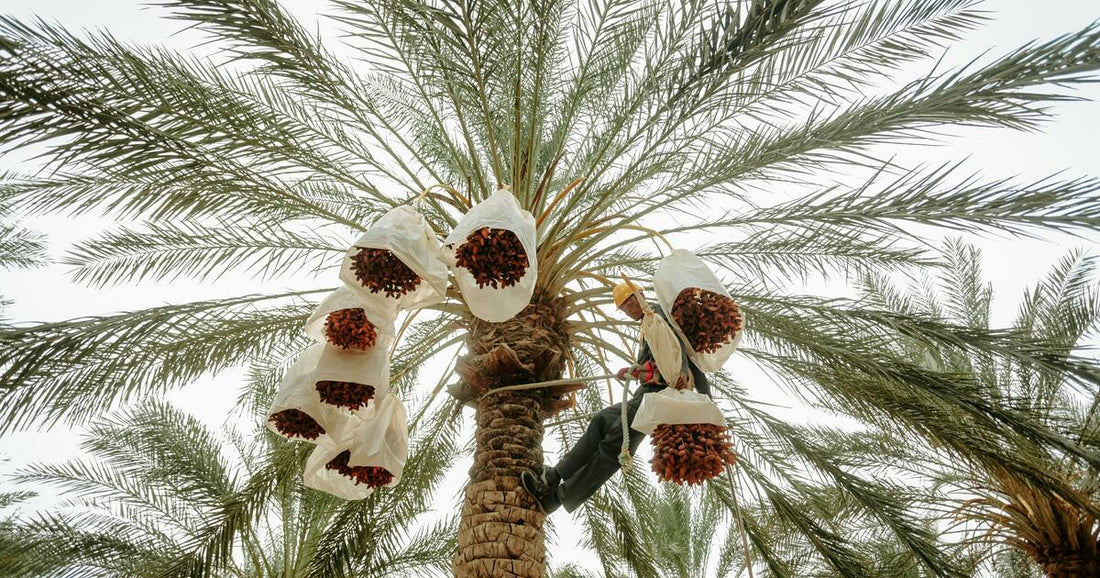Embracing Desert Farming: Opportunities and Challenges
Farming in a desert environment presents unique challenges due to extreme temperatures, limited water supply, and poor soil quality. However, with the right crops and farming techniques, desert agriculture can be highly productive and sustainable. Here, we explore the best crops to grow in desert conditions, focusing on their resilience and potential to thrive in arid environments.
Jujubes: The Resilient Superfruit
Jujubes, also known as "Chinese dates," are exceptionally well-suited for desert farming. These hardy trees can withstand extreme temperatures and thrive in poor, sandy soils. Jujubes are drought-tolerant and require minimal water once established, making them an ideal crop for arid regions. The fruit is highly nutritious, rich in vitamins, minerals, and antioxidants, and has a variety of uses in fresh, dried, and processed forms. Their resilience and nutritional value make jujubes a profitable and sustainable choice for desert farmers.
Date Palms: The Desert Staple
Date palms are synonymous with desert agriculture and have been cultivated in arid regions for thousands of years. These trees are incredibly drought-resistant and can produce high yields of dates with minimal water. Date palms thrive in hot climates and are well-adapted to the saline soils often found in deserts. Dates are a valuable crop due to their long shelf life and high demand in global markets, providing a reliable source of income for farmers.
Agave: The Hardy Succulent
Agave plants are another excellent choice for desert farming. Known for their ability to store water in their thick, fleshy leaves, agave plants are highly drought-tolerant. They require very little maintenance and can grow in poor soil conditions. Agave is primarily used to produce agave syrup and tequila, making it a profitable crop. Additionally, agave fibers can be used in textiles and other products, providing multiple revenue streams for farmers.
Quinoa: The Ancient Grain
Quinoa, a grain native to the Andean region, has shown great potential for cultivation in desert environments. This resilient crop can tolerate poor soils and extreme temperatures, making it suitable for arid regions. Quinoa is highly nutritious, rich in protein, fiber, and essential amino acids, which has driven its popularity as a health food. Its adaptability and high market demand make quinoa an attractive crop for desert farmers looking to diversify their produce.
Pomegranates: The Hardy Fruit
Pomegranate trees are well-adapted to desert conditions and can thrive in hot, dry climates. These trees are drought-tolerant once established and can produce abundant fruit with minimal water. Pomegranates are rich in antioxidants and vitamins, making them a popular health food. The fruit can be consumed fresh, juiced, or used in various culinary applications, providing multiple market opportunities for farmers.
Cactus Pear: The Versatile Crop
Cactus pear, also known as prickly pear, is a versatile crop that thrives in desert environments. This cactus species is highly drought-tolerant and can grow in poor, sandy soils. The pads (nopales) and fruits (tunas) of the cactus pear are both edible and highly nutritious, offering a range of culinary uses. The plant is also used in animal feed and as a natural barrier for livestock, making it a multifunctional crop for desert farmers.
Tepary Beans: The Desert Legume
Tepary beans are a traditional crop of the Native American tribes in the southwestern United States and northern Mexico. These beans are extremely drought-tolerant and can grow in poor soil conditions. Tepary beans are rich in protein and fiber, making them a nutritious food source. Their ability to fix nitrogen in the soil also improves soil fertility, benefiting other crops grown in rotation.
Tips for Successful Desert Farming
To maximize crop yields and sustainability in desert environments, consider the following tips:
- Efficient Water Management: Utilize drip irrigation, rainwater harvesting, and mulching to conserve water and ensure it reaches the plant roots effectively.
- Soil Improvement: Enhance soil quality with organic matter, compost, and cover crops to retain moisture and improve fertility.
- Shade and Wind Protection: Use shade nets, windbreaks, and other protective measures to shield crops from extreme temperatures and strong winds.
- Crop Rotation and Diversity: Rotate crops and incorporate a variety of species to prevent soil depletion and reduce pest and disease pressures.
- Local Adaptation: Choose crop varieties that are specifically adapted to your local climate and soil conditions for better resilience and productivity.
Conclusion: Thriving in Arid Conditions
Farming in a desert environment requires careful planning and the selection of crops that can withstand harsh conditions. By choosing resilient crops like jujubes, date palms, agave, quinoa, pomegranates, cactus pear, and tepary beans, farmers can successfully cultivate productive and profitable farms in arid regions. With efficient water management, soil improvement, and protective measures, desert agriculture can be both sustainable and rewarding, turning challenges into opportunities for growth and innovation.

